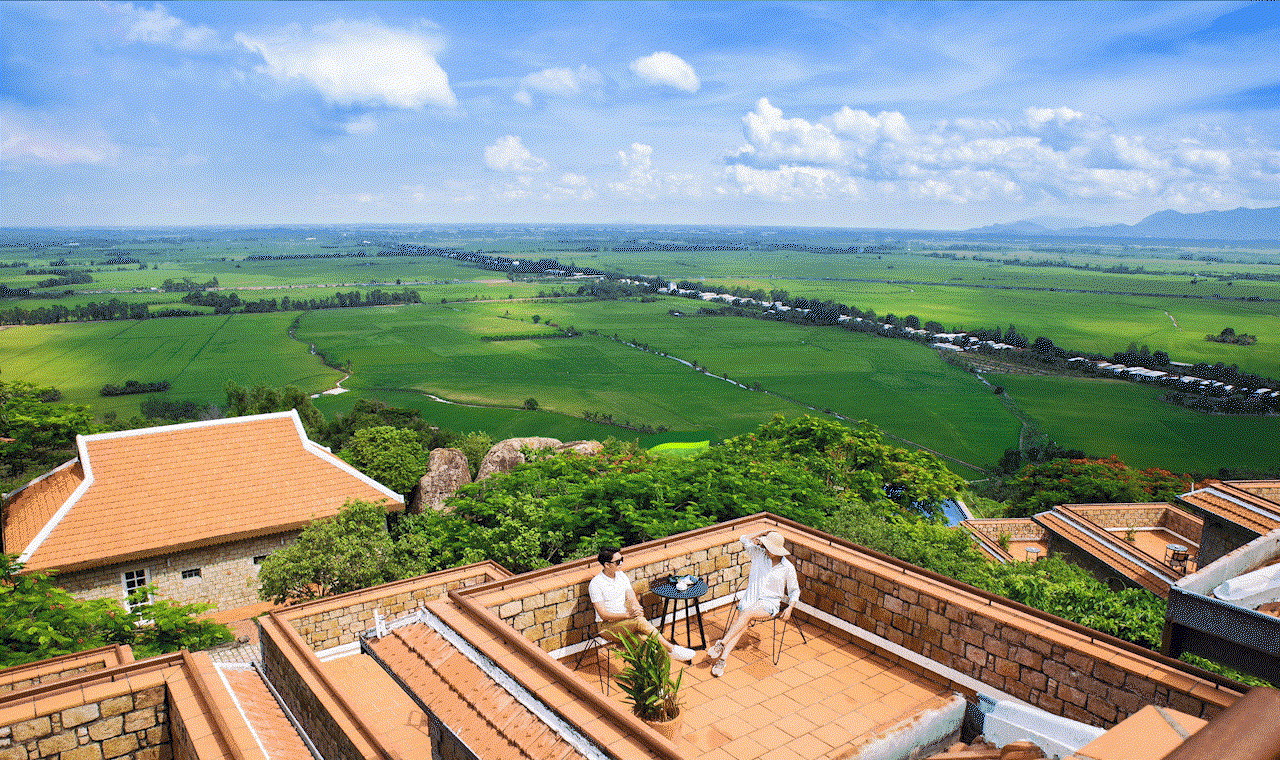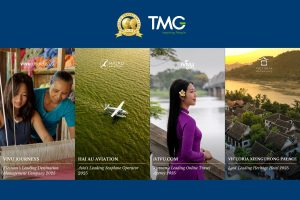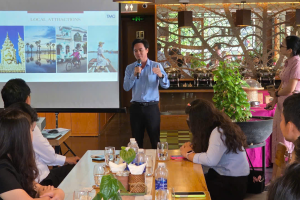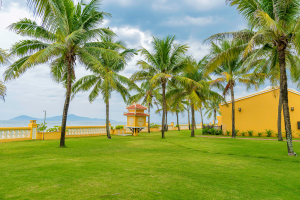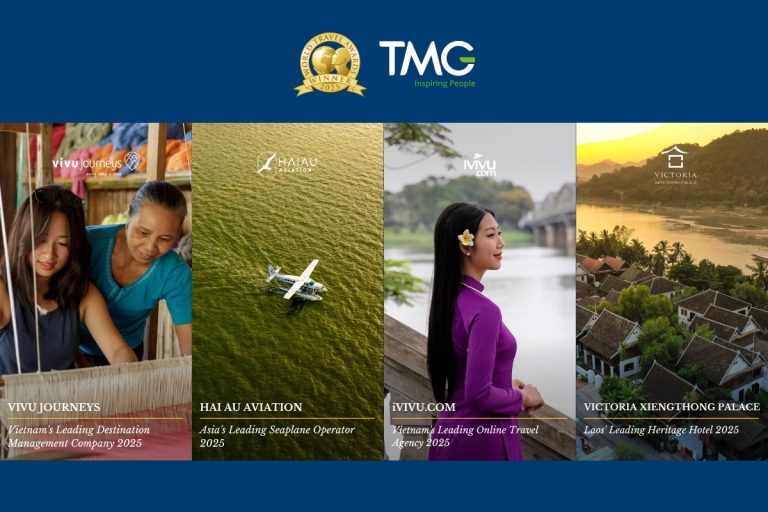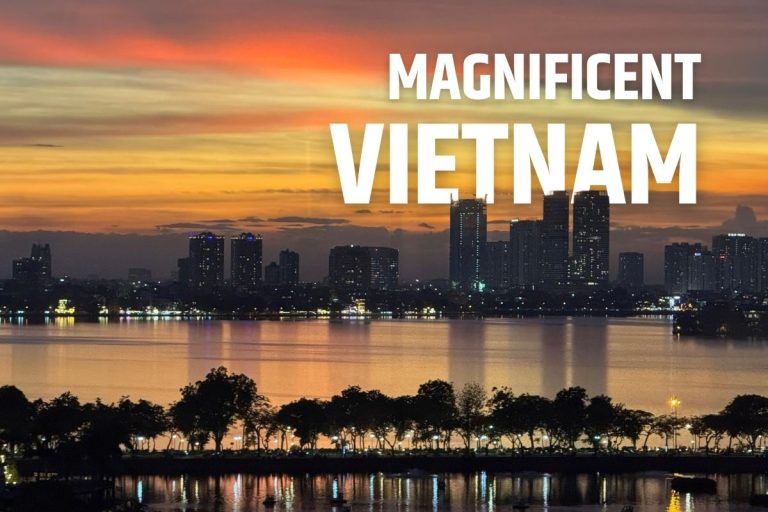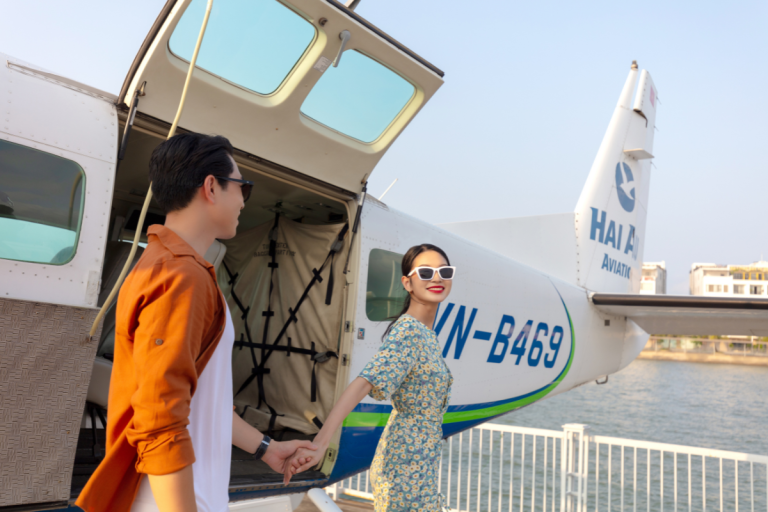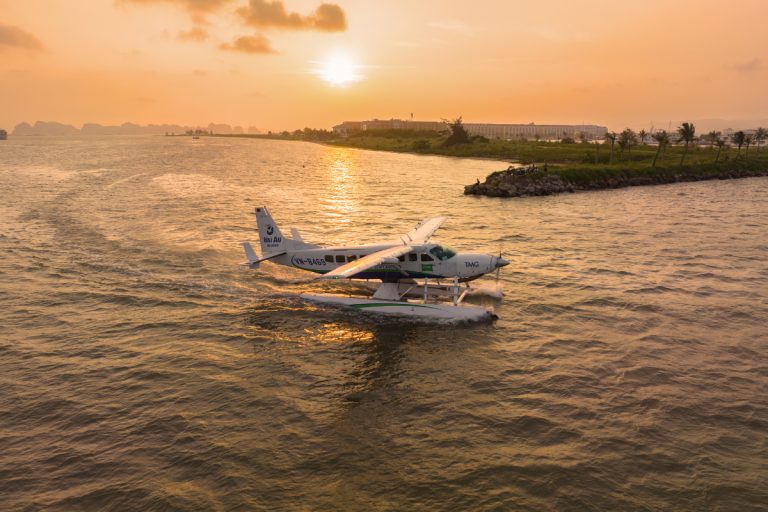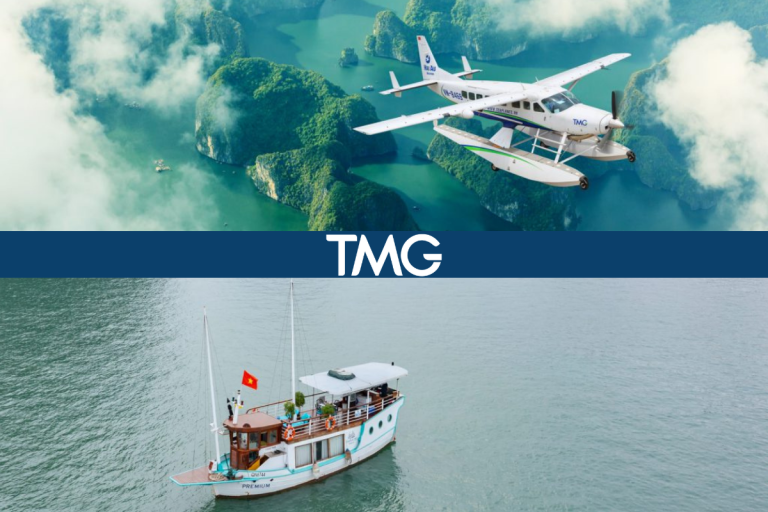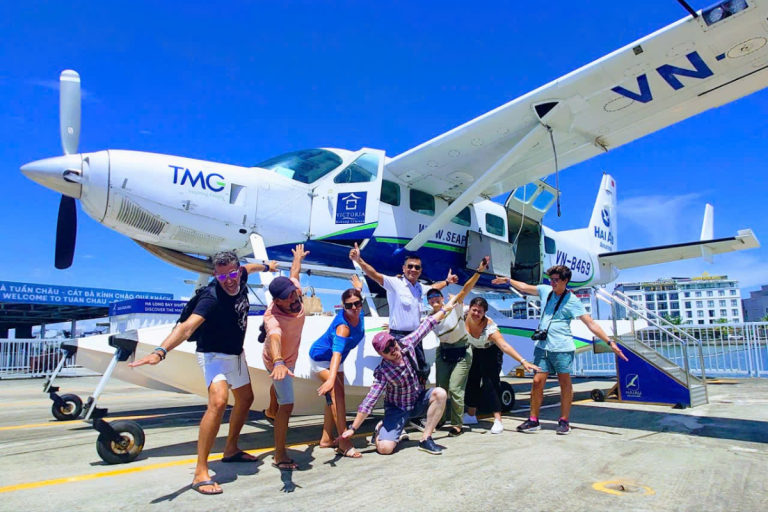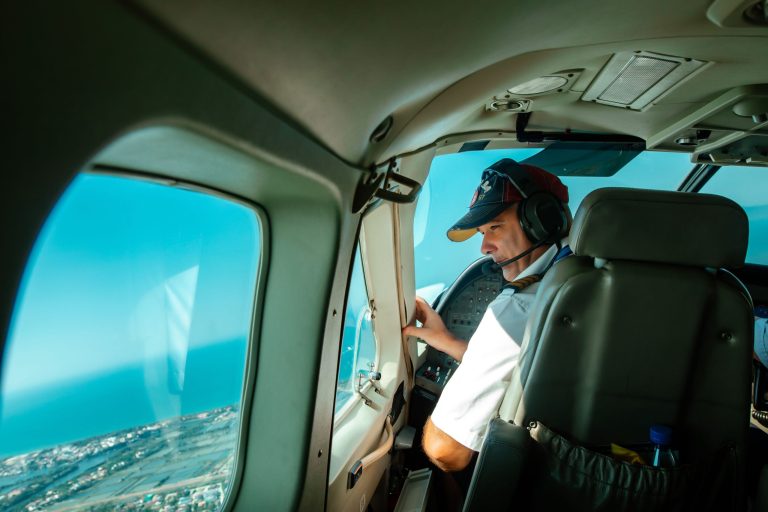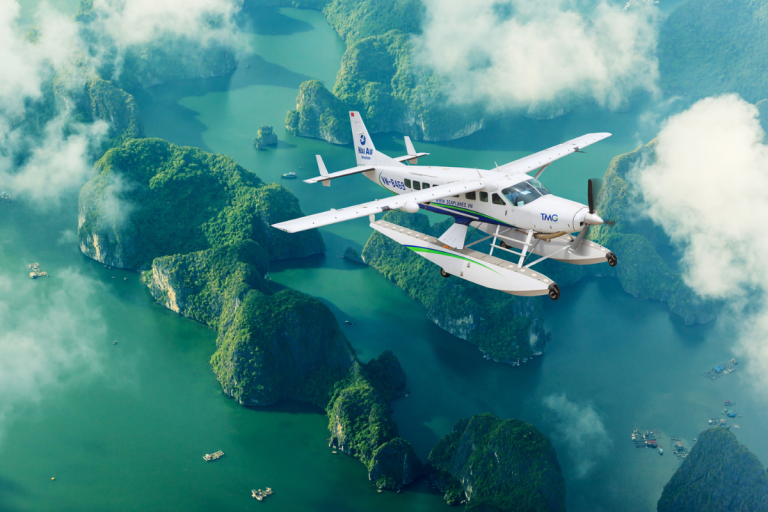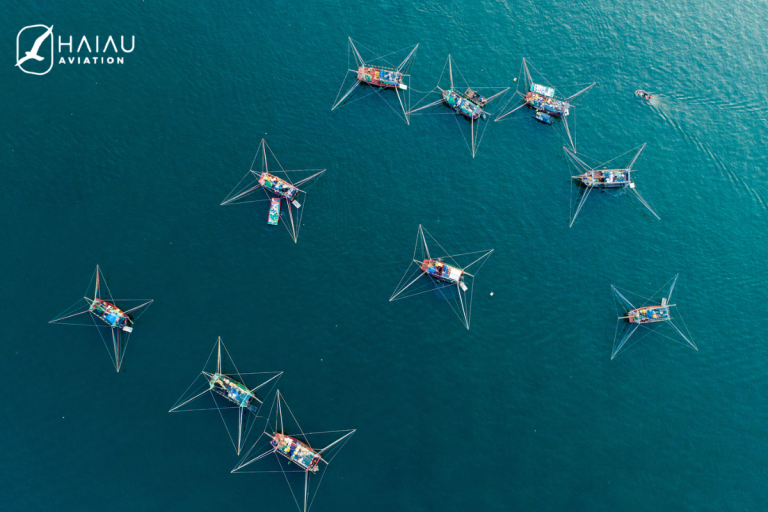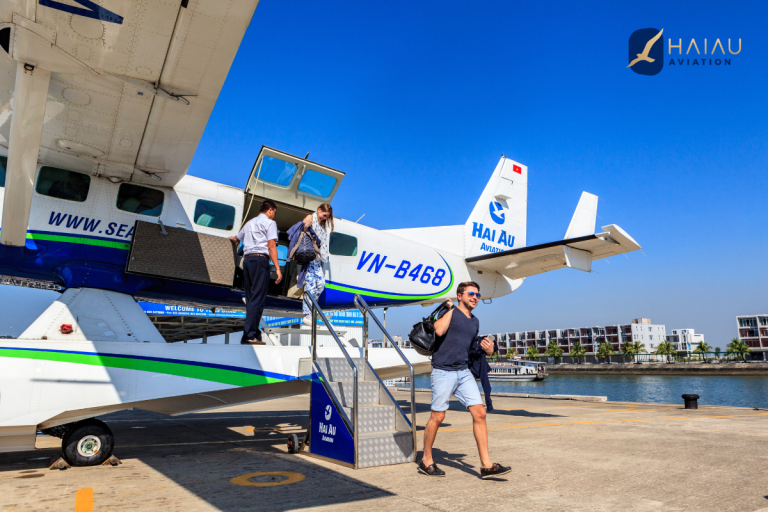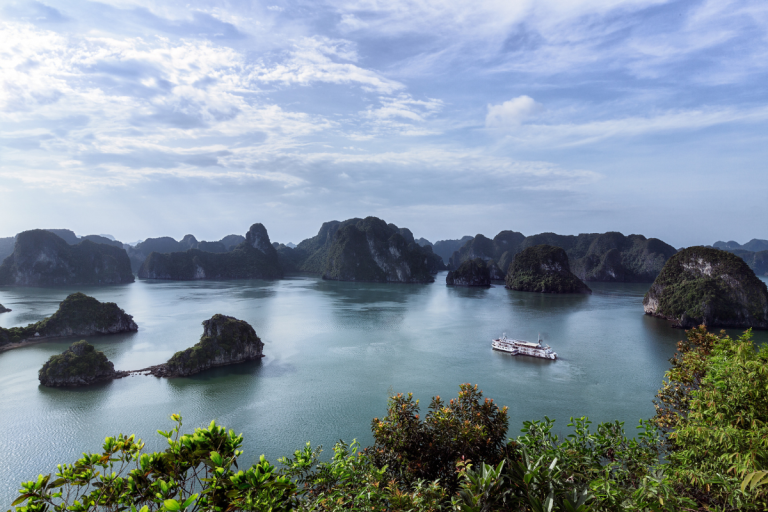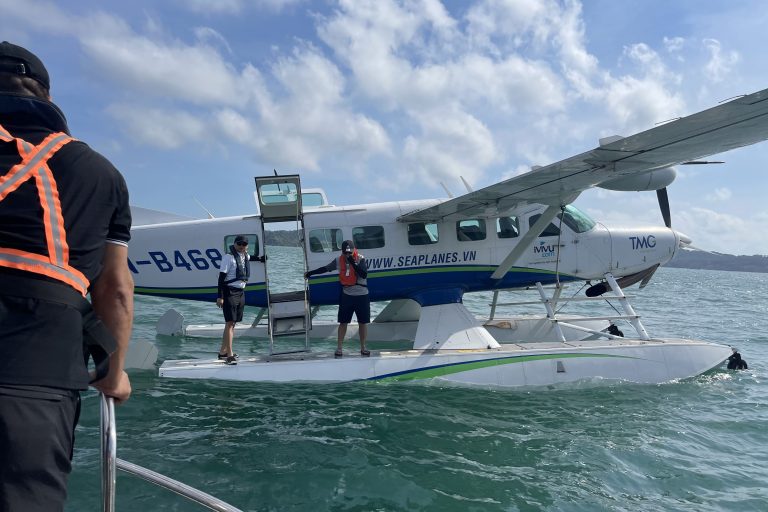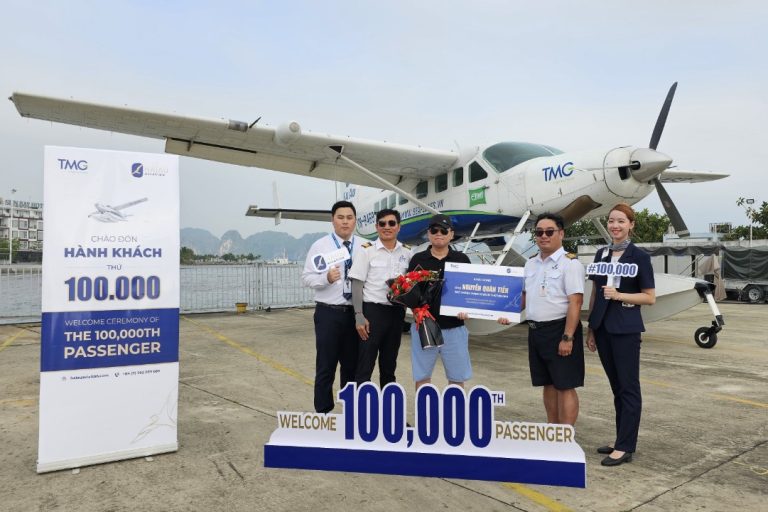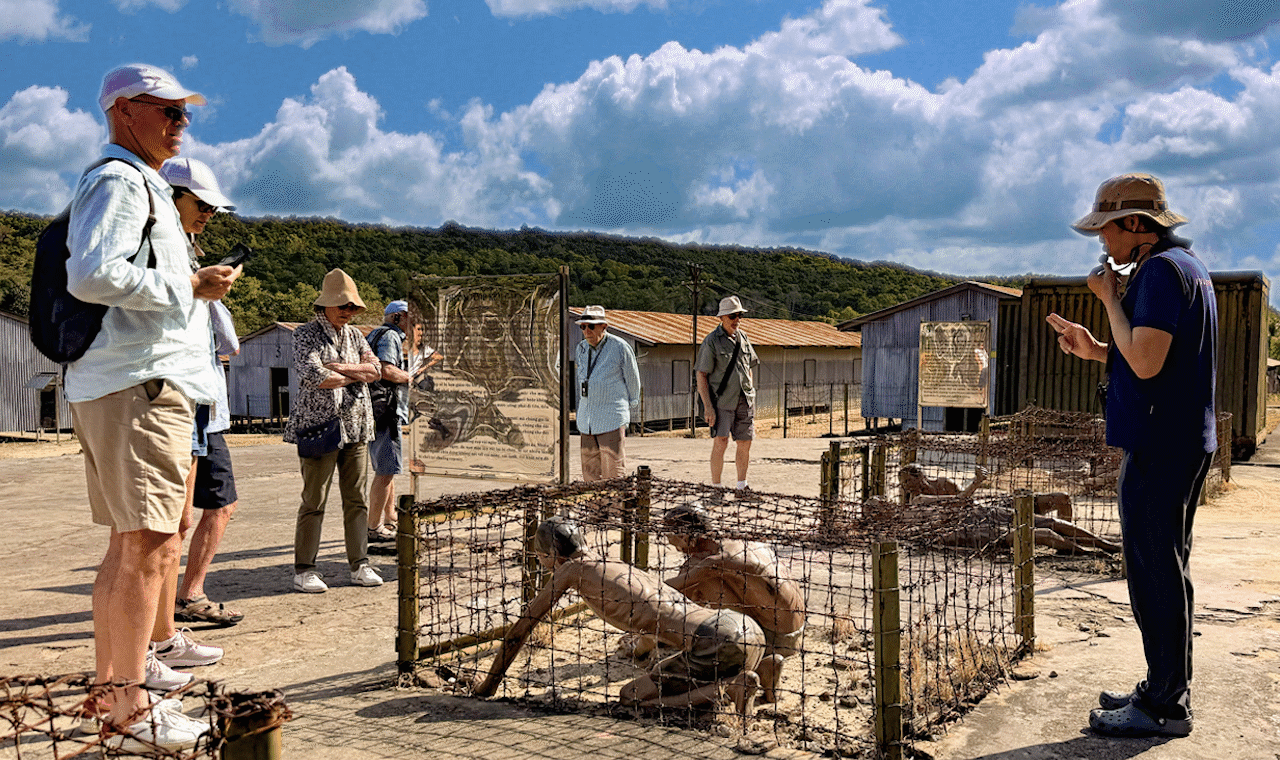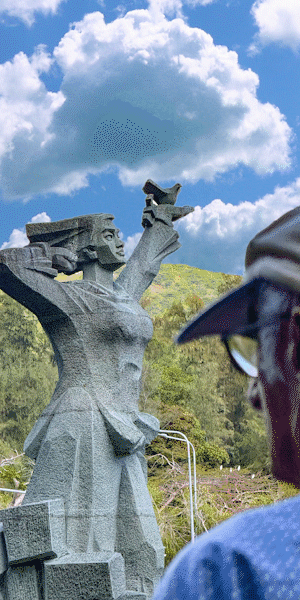TMG – Right from its inception, Hai Au Aviation was considered a risk for Thien Minh Group as it looked to pioneer a service that was previously unheard of for Vietnam: scenic flights by seaplane at an initial price of up to VND 5 million for a 25-minute flight. After 10 years, Hai Au has not only survived COVID-19 but has gradually won over domestic travelers, with ticket prices adjusted to about VND 2 million.
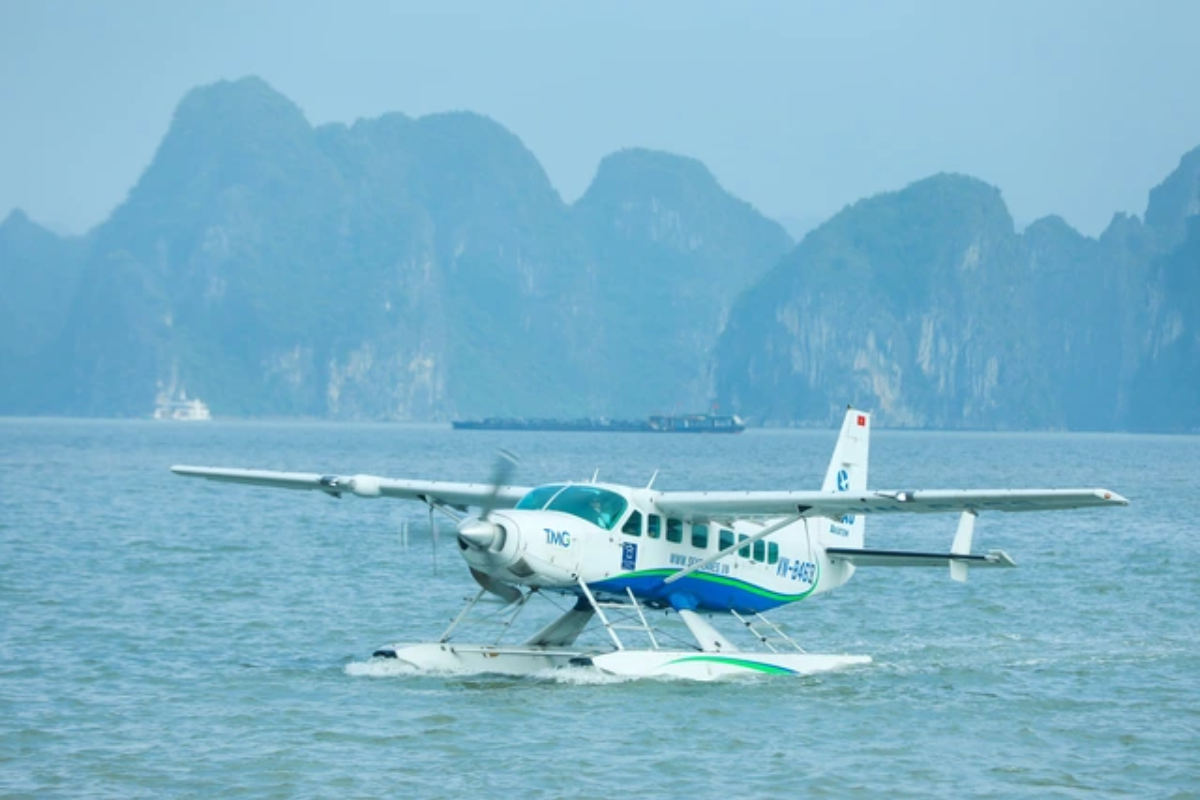
In August 2014, two Hai Au Aviation seaplanes (a member of Thien Minh Group) arrived at Noi Bai airport after a 15,000 km-long journey across the Pacific Ocean, marking the first time this type of aircraft was put into service in Vietnam, although seaplanes were not altogether unfamiliar to many other parts of the world. With both wheels and floats installed under the fuselage, seaplanes can land both on airport runways and on water, including seas, rivers, and lakes.
These were two of three Cessna Grand Caravan 208B-EX seaplanes that Hai Au ordered from the Cessna Aircraft Company (USA), at the cost of about US$ 3.2 million each. Each aircraft has two seats for the pilots, 12 seats for passengers, and large windows for viewing from an altitude of 150-2,000 m above sea level.
Despite introducing a new and unique tourism product, promising to attract both domestic and foreign tourists, the seaplane service was considered a gamble on the part of Thien Minh – an established enterprise in the tourism industry. In addition to the considerable investment cost, the ticket price of VND 5 million per passenger for 25 minutes of sightseeing over Ha Long Bay proved to be a barrier for domestic tourists. Another obstacle that must be mentioned was the complicated procedures required for seaplanes.
However, in the ten years since operating that initial flight, Hai Au has maintained an average annual growth rate of 15-20%, while increasing the proportion of domestic visitors from 10% to 30% post-pandemic.
Focusing on Ha Long Bay, overcoming the “storm” of Covid-19
Compared to its first day of operation, Hai Au still maintains three Cessna 208 seaplanes, with plans to research and acquire aircraft using electric engines to align with the world’s “green” fuel movement. Three types of services are being offered: scenic flights (lasting about 25 minutes), scheduled flights (flying a fixed number of routes), and charter flights (comparable to a flying “taxi” service). Covid-19 dealt a serious blow to the tourism industry in general, with its many distancing regulations, travel restriction policies, and international border controls. COVID-19 hit Hai Au especially hard because, pre-pandemic, international guests accounted for 90% of the total number of passengers served by the aviation. The outbreak of the pandemic caused this source of customers to completely dry up.
“Like other businesses in the aviation and tourism industry, Hai Au faced many difficulties and had to suspend operations from February to April 2020. At that time, we realized that the domestic market would be our only lifeline, so we implemented a series of marketing and advertising strategies, joined up with strong domestic partners, and adjusted fares to be more in line with Vietnamese spending power. As a result, we resumed flights in May 2020,” said a representative of Hai Au Aviation.
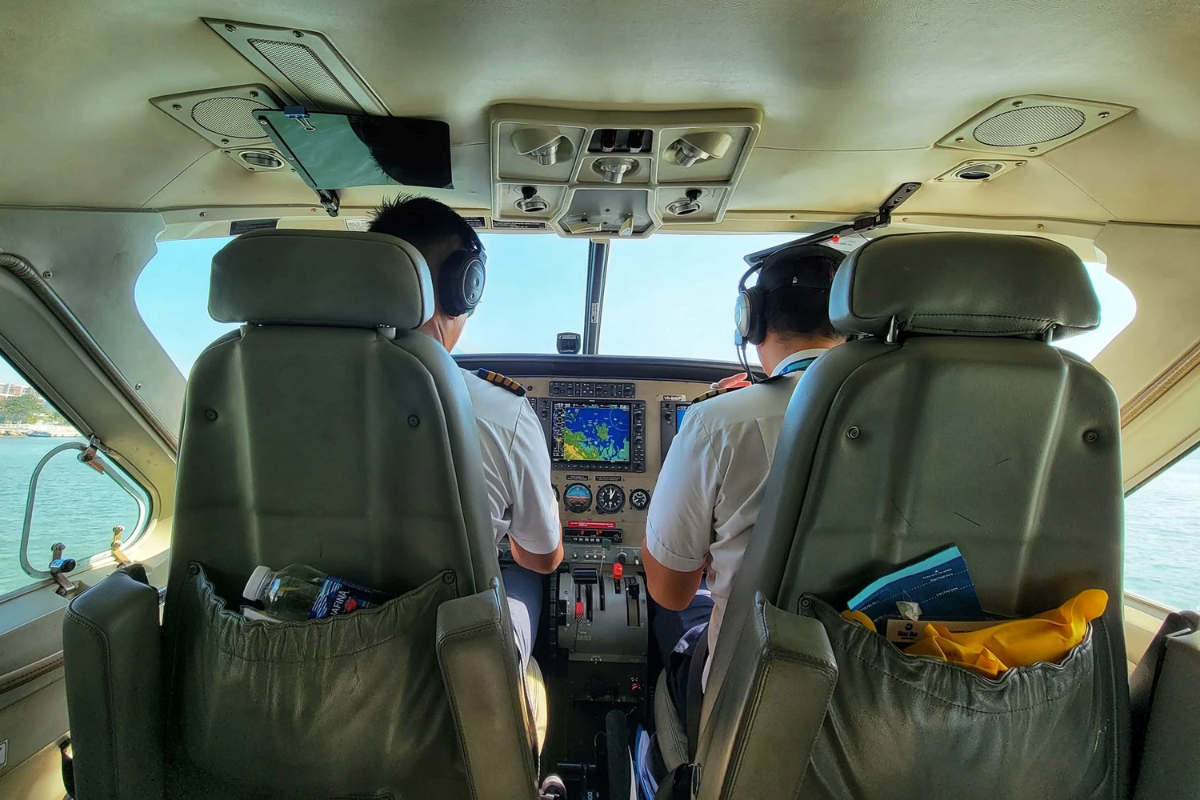
According to the Hai Au website at the time of writing, the ticket price for 25 minutes of sightseeing in Ha Long Bay is VND 2 million per passenger. A representative of the aviation said that during the Covid-19 pandemic, Hai Au was the rare case of a tourism company in Quang Ninh province that was able to maintain regular operations with 100% of customers coming from within the country, showcasing the viability of the seaplane experience.
“In the summer of 2021, there were days when we operated up to 15 sightseeing flights to serve solely Vietnamese tourists. Thanks to a prompt pivot in the source market, Hai Au survived the COVID-19 pandemic, earned revenue, and was even able to increase our output. We didn’t have to lay off any employees and we didn’t have any financial obligations to any of our suppliers,” he said.
Hai Au went in the direction of developing tourism products in Hanoi and Quang Ninh, with a focus on the World Natural Heritage site of Ha Long Bay. The aviation’s average annual customer and revenue growth rate is 15-20%. In 2023, more than 10,000 passengers took Hai Au flights.
Implementing the strategy of courting domestic passengers between 2020 and 2023 and with the recovery of international visitors from mid-2023, the current proportion of Hai Au passengers is 70% international and 30% domestic. In 2023, the aviation opened another route to Co To Island and is researching the possibility of opening flights to Quan Lan, another island in the region.
Hai Au currently partners with many large travel companies in the domestic market such as Vietravel and Saigon Tourist; 4-5 star hotels and resorts including Novotel, Metropole, and Vinpearl; as well as several cruise lines. The goal is to offer travelers an all-inclusive travel solution featuring unique experiences.
Infrastructure challenges, management mechanism: A case of the chicken or the egg
Assessing the potential for developing seaplane services in Vietnam, the Hai Au representative pointed out that Vietnam has a long coastline and an extensive network of rivers and waterways, creating optimal conditions for two types of services combining aviation and seaplane tourism: Short distance transfers between localities and sightseeing experiences.
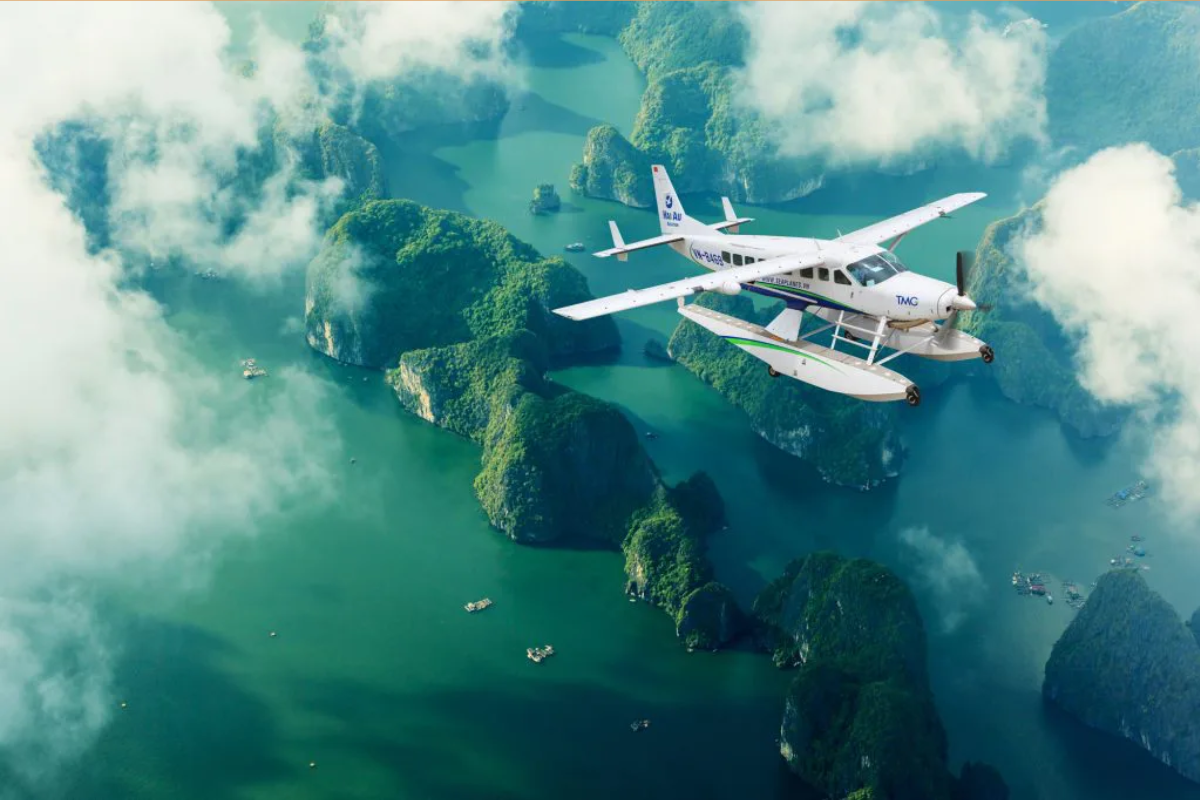
“Imagine seaplane flights from Noi Bai to Ba Be Lake or Ha Long Bay, or taking off from the Saigon River and landing at the Hau River pier in the city of Can Tho. For us, tourist centers such as Nha Trang Bay and Phu Quoc Island all have great potential for developing seaplane tourism products. A global example is the Maldives, where every visitor flies to their island resort by seaplane.
One point that we need to emphasize is that the marine “airfields” where seaplanes land and take off represent “infrastructure” provided by Mother Nature and are ready to use. We essentially do not need to invest anything else,” the representative said by way of analysis.
However, the question remains that in light of such potential, why is Hai Au still the only seaplane company in the Vietnamese market?
In answering that question, the aviation representative explained that investing in aviation is never easy, especially in the field of general aviation – including seaplanes. In addition to the challenges of securing aircraft, passenger sources, and revenue, aviations must spend a significant amount of money to ensure aviation safety standards – the most important operational factor in the industry. According to him, any business involved in the industry must carefully take this factor into consideration.
“Additionally, the seaplane sector in particular and general aviation in Vietnam face challenges in infrastructure and specialized management mechanisms. For example, we do not yet have a dedicated airport network plan. Seaplane companies such as Hai Au must apply for approval for each airport and each flight route when they want to expand
operations.
This process is very difficult and time-consuming. This is a case of the chicken or the egg, which comes first -infrastructure or the need to develop general aviation? In our opinion, this area urgently needs the attention of specialized state management agencies with a view to development,” said the Hai Au representative.
Source: CafeBiz


